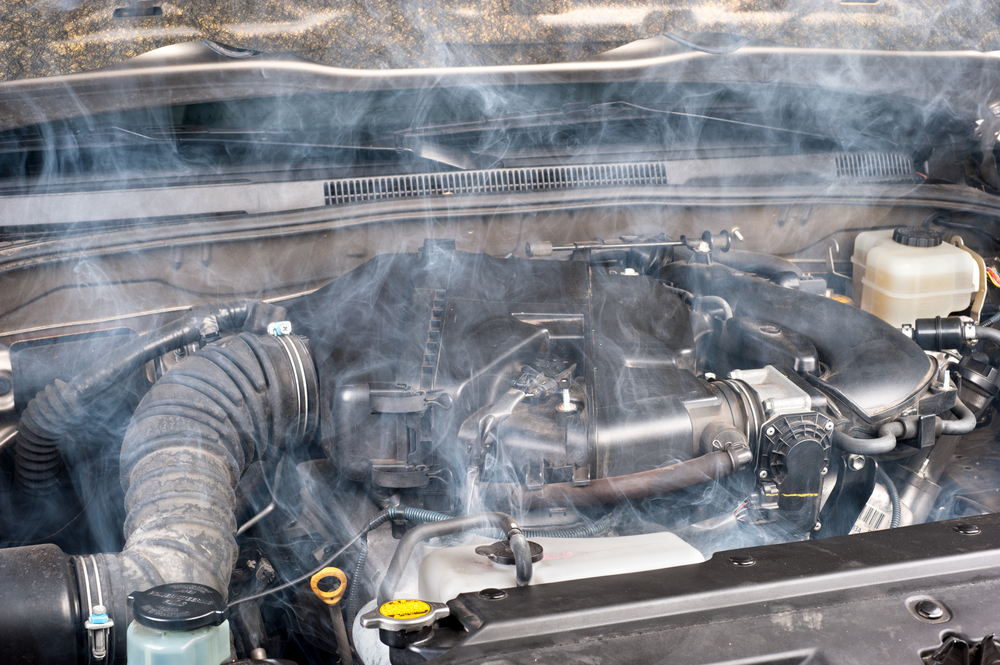You are happily on your way to your holiday destination and can’t wait to get there. Suddenly, you begin to see what looks like steam or smoke coming out of the bonnet. You glance at your temperature gauge, and the needle is rising fast into the red zone. Instinct tells you to pull over as soon as possible and switch off the engine before any damage can occur. Read more to find out what the best course of action would be.
Some reasons why an engine overheats1
There are several reasons, such as the thermostat malfunctioning or the cooling system has sprung a leak. Whatever it may be, the engine overheats because it can no longer be cooled down. The real issue at hand is to minimize the time of overheating to avoid permanent engine damage.
Prevention is as important as the cure1
You can prevent severe engine damage if you can spot overheating signs early enough. If you know what to look out for, you’ll be that much more alert to take appropriate action. One of the first signs of overheating is when steam is escaping out of the bonnet. In addition, the temperature gauge starts to move fast into the red or danger zone. Finally, the smell may indicate what the problem could be. For example, overheated coolant can smell sweet, whilst overheated oil gives a burning smell.
The following are steps to follow when you notice the engine is overheating.
Remove heat from the engine1
This can be done for a short while by turning off the air conditioner and by switching over to maximum heat flowing into the cabin, which should give you enough time to find a place to stop.
Where do I stop the car?1
It is essential that you carefully choose where you will park your car and switch off the engine. You don’t have the luxury of time but ensure you are safely out of the way of traffic.
Allow the engine to cool down1
To avoid any scalding or burns, let the engine cool down for a minimum of 15 minutes. Once you can see from the temperature gauge that the engine has cooled down to the normal level, check the coolant level.
Adding coolant1
If the coolant level is considerably below the minimum mark, it needs to be topped up. If you have coolant with you, slowly open the coolant screw top with your hand wrapped in a cloth if anything hot spills out of the coolant bottle. Then add the coolant until the level is between the minimum and maximum marks. Monitor the coolant level for a while, and if it stays at that level, it could well mean that there was just too little coolant in the system. But, if the coolant level begins to drop rapidly, it means the system is leaking, and there is no need to go any further.
Driving off or calling roadside assistance?1
If the temperature gauge is back to normal and the coolant level is back at the correct level, carefully start the engine and drive off slowly to the nearest garage. But, if there is any doubt about whether to drive off or not and run the possible risk of causing engine damage, choose to call roadside assistance to have your car towed away immediately.
The enormous value of having access to roadside assistance and towing is self-evident. In addition, you may also need to pay for possible repairs to your car. You can pay for it privately, but that will cost an excessive amount. Instead, consider getting affordable, reputable car insurance that includes roadside assistance and towing. Contact PMD for affordable comprehensive car insurance that provides roadside assistance, towing, fixed premiums* and a reduce to zero excess*. T’s and C’s apply.
Source:
1https://www.firestonecompleteautocare.com/blog/maintenance/when-car-overheats/
This article was prepared by Eric Sandmann in his personal capacity. The views and opinions expressed in this article are the author’s own. The views and opinions in the article should not be attributed to anyone but the author unless expressly stated. Nothing in this article should be relied upon as advice, this publication is presented for informational purposes only. No person should act or refrain from acting in reliance on any information found in this article, without first obtaining proper financial advice from the appropriate professional. The author makes no claims, promises or guarantees about the accuracy, or completeness, of any information linked from, referred to, or contained in this article. The author reserves the right, to edit and change the content of this article.
